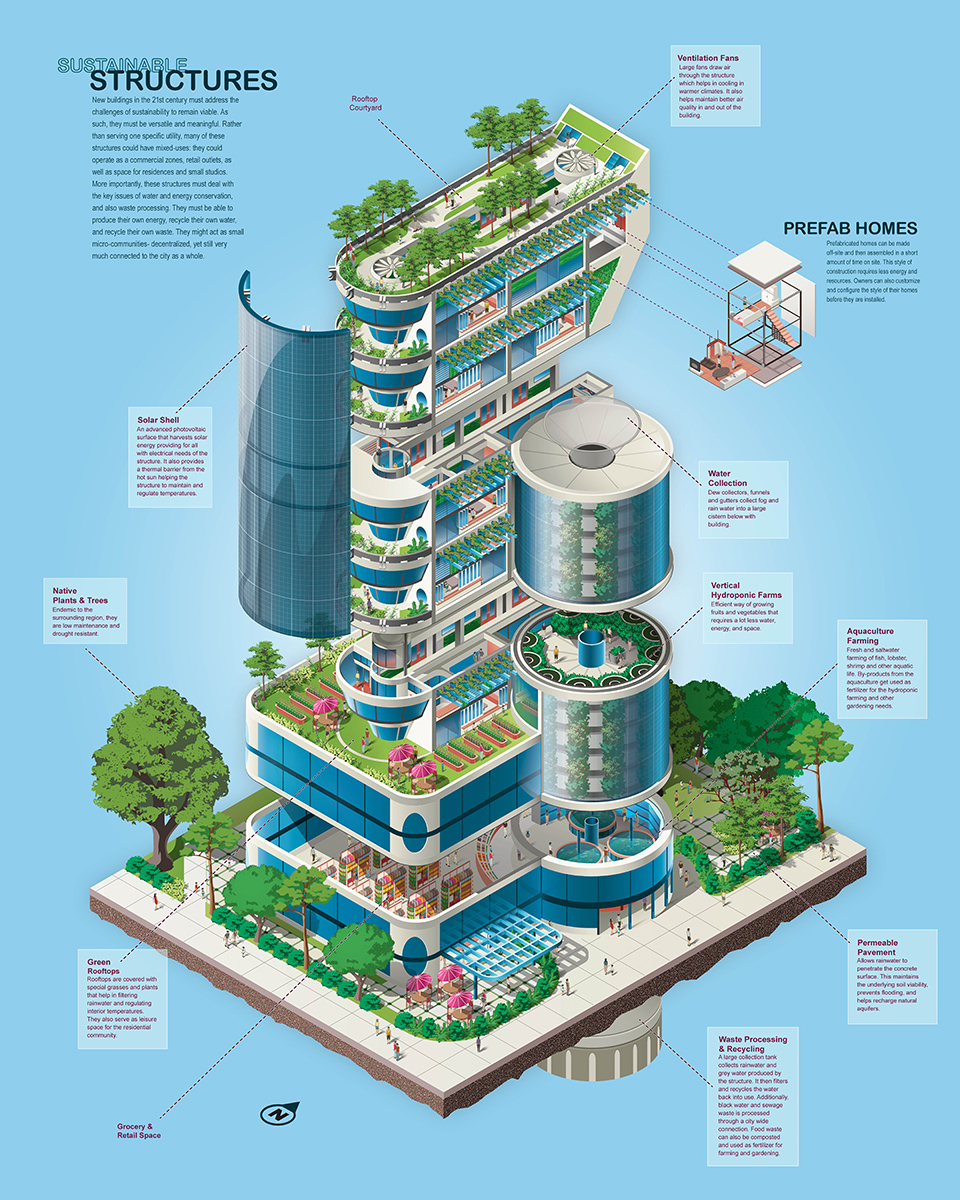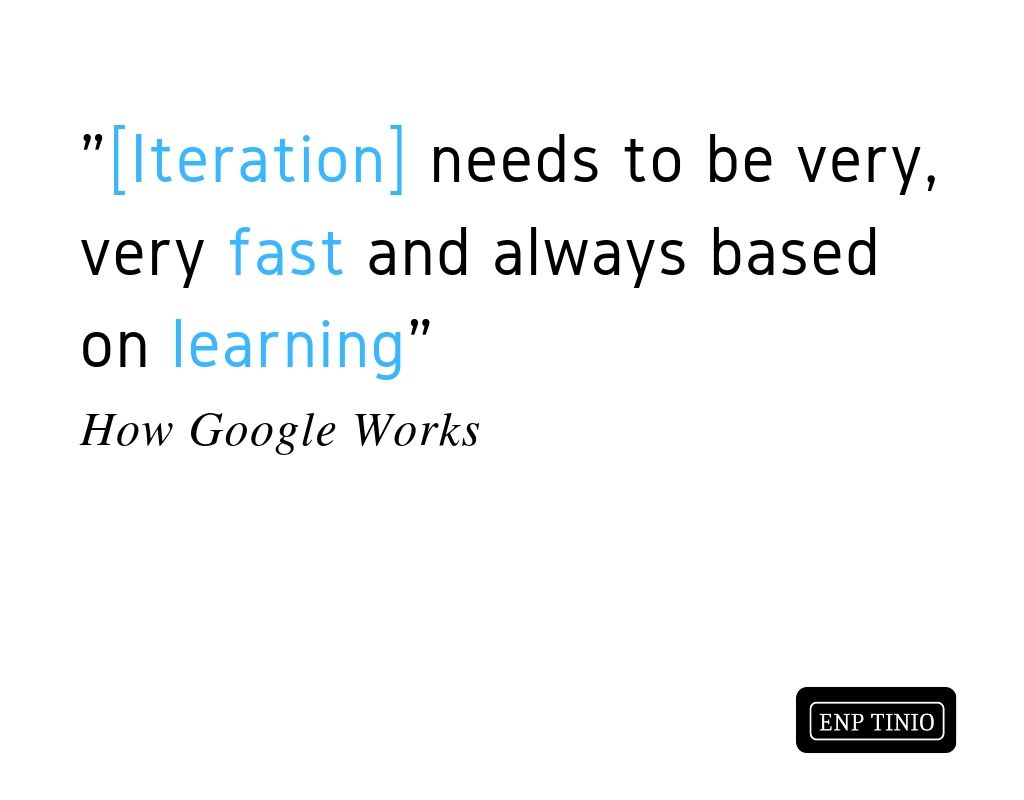The book “How Google Works” is a collection of best practices, lessons and anecdotes from the history of one of the top global icons.
Featured principles include those about organizational culture, decisions processes, and enhancing communication skills.
Viewing environmental planning as a series of project management cycles, I enumerate six strategies of Google from the “Strategy-Your Plan is Wrong” chapter of the book.
I am confident that relearning these strategies will benefit environmental planners in their daily practice of land use planning and environmental management.
Combinatorial innovation
Insights from “How Google Works”
Combinatorial innovations, coined by Hal Varian, means that “There is a great availability of different component parts that can be combined or recombined to create new inventions.”
The Internet century has allowed previously disconnected components to form new systems and inventions.
Google summarizes these components into “information, connectivity and computing.”
Just like how the gasoline engine led to innovations in transportation and the integrated circuit provided applications in various fields, so has the Internet encouraged “a wave of inventions.”
Application to Environmental Planning
Smart cities and multiple-use establishments
Smart cities are combinatorial innovations.
At present and into the future, cities will be composed of components that a decade ago were not part of the system.
These components unexpectedly became the reasons for Happy Cities.
Multiple-use establishments are also combinatorial innovations.
Multiple-use (or mixed-use) establishments conserve urban land area by reducing the footprint of various uses.

Urban land area is conserved through the increased density and proximity of uses.
Housing, food, even relationships are within arms’ reach. Connected uses cover smaller land areas than in the past.
For example, commercial establishments are at the forefront of urban green spaces and agriculture.
Malls and condominiums have privatized the greening of cities, integrating open areas into their business models.
Government Use of Social Media
Social media is a fundamental combinatorial innovation. It is a mix of relational supply and digital accessibility.
Social media platforms are used as educational hubs for both public and corporate knowledge.
Increase your urban planning knowledge by following these sites!
Marketing, especially social media marketing, is no longer only for private businesses.
Government agencies acknowledge the need to promote their digital guides and organizational news.
Summary
With different parts easily combined and recombined in systems, environmental planners have more tools in their strategy boxes.
Give the customer what he does not yet know he wants
Insights from “How Google Works”
Innovation is finding a gap in the present by creating future demand.
As Andy Dunn said, “The history of innovation is the story of ideas that seemed dumb at the time.” Demand for innovation is not immediately obvious.
The history of innovation is the story of ideas that seemed dumb at the time.
Andy Dunn
“Google” gives the example of cable broadband.
Cable broadband did not only provide fast Internet compared with the dial-up modem.
More importantly, it provided “always on” Internet.
Cable broadband created future demand.
Social media created a future demand by filling a present gap – instant connectedness.
Hiring a person to spend working hours answering comments and fighting trolls – a social media manager – would have been laughable in the 2000s.
Twenty years after, battles online translate to battles in the real life.
Application to Environmental Planning
Green jobs
In Philippine environmental planning, the enactment of The Philippine Green Jobs Act is envisioned towards creating ample supply of jobs for the near future demand of a greener economy.
Just like how the great labor migration attracted enrollees into the nursing industry, the incentivization of the green economy is hoped to increase demand for climate change adaptation and sustainability professionals.
I envision that resource management careers, including waste management, will become as profitable as we venture into just climate change adaptation.
Interested in solid waste management planning?
As more climate change mitigation options are eliminated, human societies will be “forced” to do what was originally their role: adapt to nature.
Replicate tourism
Tourism is another aspect of local planning where the LGU must give the customer “what he does not yet know he wants”.
Tourism planning is often focused on what works in other tourist destinations. Ziplines and adventure parks are treated as tourist spots.
Local governments should put more effort in making their places and citizens attractive for uniqueness than attracting outsiders with replicated tourist destinations.
Josh Martin explains replicate tourism further in his article about globalization and city holidays.
Summary
Environmental planning should be a long-term visionary exercise. Looking 30 years into the future demand and supply scenarios must not be foreign for environmental planners.
Receive articles on urban planning and solid waste management!
The plan is fluid, the foundation stable
Insights from Google
Finding the purpose of any program, institution, or company – our “why” – is a fundamental but complicated requirement from “Google.”
Application to Environmental Planning
The vision and role of the local territory
In local planning, the stable foundation is the institutionalized local vision. The Local Government Unit must know and accept its regional and national role.
Related Articles:
For instance, not all towns are “tourist destinations,” some are “tourist arrival hubs.”
These hubs are lodging and accommodation centers, sleeping quarters for tourists.
Just like what Legazpi City is for the Albay Province and what Tagaytay City is to Batangas Province.
Short-term plans adjusted for existing realities
With a firm vision reinforced by long-term plans (the CLUP and the CDP), annual plans adjusted for existing realities must be consistent with the vision.
Deviations of short-term plans from the original long-term plans must be driven by data and information from strict monitoring and evaluation.
Summary
Local executives have their political and administrative agendas that understandably are different from their predecessors.
However, if these local executives are concerned about the welfare of the people, they will recognize the essence of continuity and guided change in long-term local plans.
“Rapid iteration is critical to success…”
Insights from Google
Eric Schmidt identifies iteration as “the most important part of strategy.”
Google Search defines iteration as the “repetition of a process…towards successively closer approximations to the solution.”
Iteration: repetition of a process…towards successively closer approximations to the solution.
When you iterate, you do not only change the strategy because it did not fully succeed. With iteration, you consider what you have learned from the current phase and adjust accordingly.
Rapid iteration is effective because you are able to eliminate past wrongs in the new version of the strategy, without disregarding resources of the previous strategy.
“If it ain’t broke, why fix it?” Well, “Insanity is doing the same action over and over and expecting different results.”
Rapid iteration prevents insanity.

Application to Environmental Planning
Plan Revisions with Monitoring and Evaluation
In environmental planning, rapid iteration is relative.
The LGU is advised to revisit and revise the Comprehensive Land Use Plan (CLUP) in multiples of six of nine years; the medium-term Comprehensive Development Plan in multiples of three years.
The revisions and updating of local plans must be synchronized with the terms of elected officials for continuity.
Also, revisions to the CLUP can be specific to sections, informed by monitoring and evaluation data.
For example, the Rationalized Planning System highlights vision-reality gap ratings and spatial strategies as features of the CLUP that need reviewing according to information from monitoring and evaluation.
Decision-making should be data-driven and participatory.
Strict monitoring and evaluation of success indicators prevents the influence of a few powerful groups in key decision areas without factual foundations.
Compromise, not consensus, should be the aim.
However, pursuing outcomes that obviously benefit only the rich, powerful, and elite are both counterproductive and unethical.
Summary
Monitoring and evaluation is the missing link between planning and implementation, as points for improvement are only valid with reliable data and information.
Without information about success (or failure) indicators, iterations will be for naught.
Receive articles on urban planning and solid waste management!
Optimize for scale
Insights from Google
Scale is a key concept in geography, with many different meanings. I will use scale to mean “scope or extent.”
The broader the scale of a phenomenon, the more elements are influenced of a phenomenon, the larger the area of influence.
Optimizing means producing the highest benefits with the least costs or inputs.
Optimizing for a situation is achieving a goal while considering constraints and variables for the right plan.
For scale optimization, “Google” mandates virality: “Grow big fast.” The impacts of efforts should affect a large portion of the population fast!
Scaling quickly is easier especially in the age of outsourcing.
“Google” emphasizes that the Internet not only shrunk transaction costs and reduced the costs of tasks externally.
The Internet also allows for the creation of “fundamentally better products,” transforming products into platforms.
Application to Environmental Planning
Multi-sectoral Impacts
In environmental planning, scaling impacts means affecting multiple sectors and stakeholders.
Interventions should be high-impact, having expansive, immediate outcomes and long, positive sustainability.
All sectors must experience positive effects (“trickle down effect”), reinforce feedback (through impact loops), and encourage impact multipliers (growing big fast, ripple effect).
Read: System Dynamics Modelling and Urban Environmental Systems
Minimal Obstacles to Capacity-building
Today, capacity-building in local planning should not be as costly. Digital modules are available for download and offline reading of local planners, even in disadvantaged municipalities.
Interested in solid waste management planning?
I believe that even though local planners are burdened by daily tasks (as this study reveals), long-term planning must be given time and manpower. Strategic thinking is an indispensable responsibility of local planners.
Summary
With “fundamentally better” resources available to local planners, best practices in environmental planning should scale quickly.
Default to open, except when closed systems work well.
Insights from Google
Open systems, as described by How Google Works:
- have external interactions, involving information exchange and feedback.
- drive innovation by creating more value for users and reinforcing more growth in the system.
- provide users freedom to leave the platform, in search of better platforms.
- make rapid improvements necessary to discourage users from leaving the platform.
Application to Environmental Planning
Until now, even with the Freedom of Information initiatives, much of government data that is “public property” have not been translated online for higher accessibility of the public.
Data users must personally come to government offices to view a printed copy of a plan.
If data is really aimed to be “public,” these must be posted on agency websites or at least ready for digital dissemination upon email requests.
To paraphrase Michael Nielsen,
“Despite the value of open data, most [agencies] make no systematic effort to share data with other [agencies],” or the public for that matter.
Environmental planning processes are required to be participatory by the Guidebook in Comprehensive Land Use Plan Formulation.
Drivers of the planning process are accountable for making the planning process and planning inputs open and accessible to all sectors.
Summary
Closed systems, in the form of top-down, mere consultation processes, do not work well.
Previous plans exclusively top-down have generated low-impact plans without support from the citizens.
Therefore, environmental planning should strive to continue opening, as the participatory approach has proved to be more successful.
Conclusion
Google is a ubiquitous icon that succeeded because of strategies including the six above.
Environmental planners who will copy these strategies will build capacity and enhance their opportunities for success.
How to become a Filipino Environmental Planner?


2 replies on “6 Strategies of Google that You Should Copy (and how they apply to Environmental Planning)”
[…] [Iteration] needs to be very, very fast and always based on learning. How Google Works […]
[…] 6 Strategies of Google that You Should Copy (and how they apply to Environmental Planning) […]